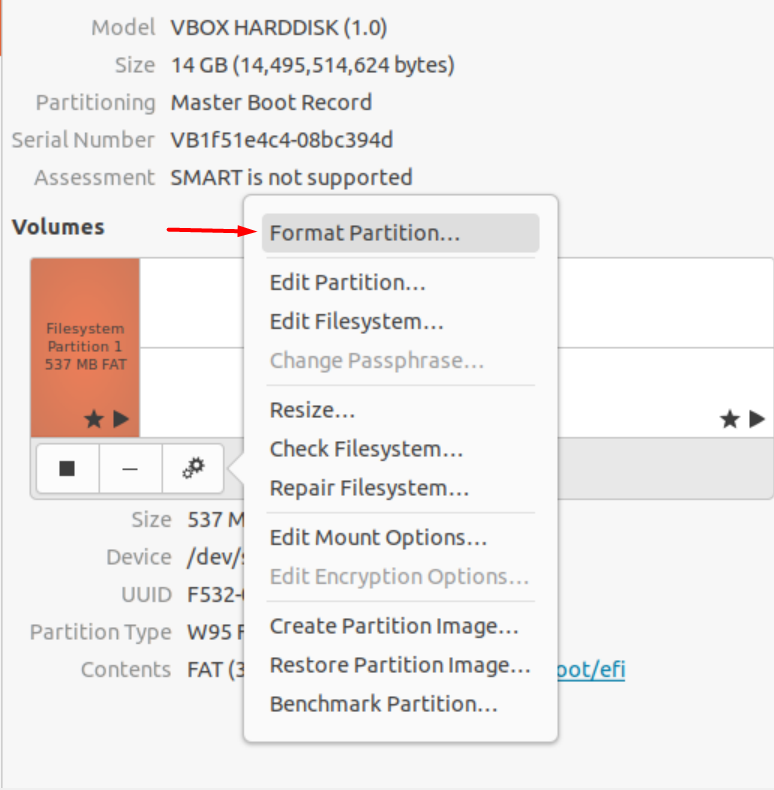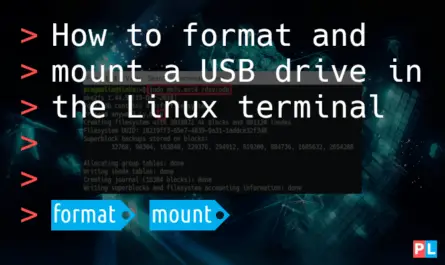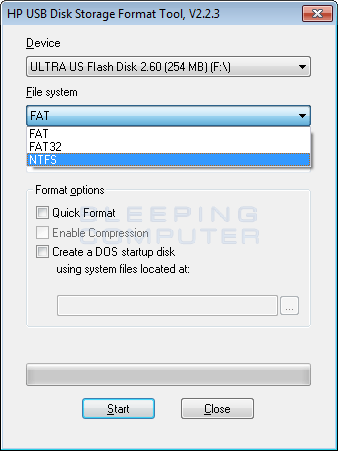
Then open menu View > Refresh Devices (F5). Warning: don't touch any other drive entry if you don't want to format it. List of hard disk drives available shown on left panel.

This picture shows on right panel, some partitions of my second hard disk drive (located at /dev/sdb).
How to reformat a usb drive on linux password#
Enter your root password then the KDE Partition Manager should appear. A dialog will ask you for administrative password. Open Kubuntu menu > search for kde partition > click KDE Partition manager. We have no responsibility for any damage you may get by following these instructions. False partitioning may delete whole your hard disk drive(s) data.

You must know exactly what to do, carefully read partition or volume location, carefully read every message showing, before doing any single thing. Preparation Warning: partitioning or formatting is a dangerous activity.
How to reformat a usb drive on linux how to#
Here, we will give an example about how to format a USB flash drive with KDE Partition manager. We can do many partitioning stuffs like GParted with it. If you got no errors – your mount worked, try df -h once more to see if everything is fine.As opposed to GNOME family system, Kubuntu has KDE Partition Manager as replacement for GParted. To make sure this mounts automatically, issue the following command: mount -a Before you issue the following command, be aware that this re-mounts ALL Filesystems, and will more than likely disconnect most other users Note: After adding one of these lines press add one more empty line below since fstab requires the new line symbol at the end of every config line.

If you want the partition to auto mount on server (re)boot edit fstab file located at /etc/fstab and add one of following lines at the bottom of it depending if you for /backup folder or the line below for /home2 folder: /dev/sdb1 /backup ext3 defaults 0 0 cPanel should automatically detect /home2 and should ask you whether you like to setup new account on /home or at /home2. Now you can use the additional hard drive for cPanel/WHM backups or storing new sites. Now just mount the backup partition or the new home partition mount /dev/sdb1 /backup If you want to use this hard disk for backup make /backup folder or if you want to use it to store more sites make new home folder called /home2 mkdir /backup On newer distributions (CentOS 6.3 for eg) use this command to format a new partition. That has created and saved new partition and it will be called /dev/sdb1 (first partition on /dev/sdb). – “ Enter” / “ Enter” for the first AND last cylinders (automatically use the entire disk) So let’s make the partition on /dev/sdb by executing fdisk /dev/sdb You should notice that second hard disk (/dev/sdb) has no partition and that probably means that it’s un-partitioned yet. I/O size (minimum/optimal): 512 bytes / 512 bytesĭisk /dev/sdb doesn't contain a valid partition table Sector size (logical/physical): 512 bytes / 512 bytes Output should looks like this: Disk /dev/sdb: 500.1 GB, 500107862016 bytesĢ55 heads, 63 sectors/track, 60801 cylinders If you execute command like the one below you’ll get more detailed preview of your hard discs and their partitions: fdisk -l

You can get a list of disk drives in system using this command fdisk -l | grep '^Disk' Usually disk drives on Linux are named /dev/sda (first HDD), /dev/sdb (second HDD) or something similar. Process of partitioning, formatting and mounting is quite simple.įirst check what disk drives do you have. The hard drives must not be in any kind of Raid setup. If you have two hard drives you can mount second hard drive to be used for (cPanel/WHM) backups or for hosting more sites.


 0 kommentar(er)
0 kommentar(er)
